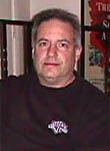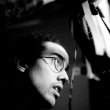|
|
This topic comprises 2 pages: 1 2
|
|
Author
|
Topic: Kodak Take Another Step On The Way To The End Of Film
|
Mitchell Dvoskin
Phenomenal Film Handler

Posts: 1869
From: West Milford, NJ, USA
Registered: Jan 2001
|
 posted 08-25-2005 11:39 AM
posted 08-25-2005 11:39 AM




Fox News
quote: Fox News
ROCHESTER, N.Y. — Eastman Kodak Co. (EK) , battling a steep drop in demand for photographic film and paper, is scaling back film manufacturing in China and closing various businesses in Rochester and West Virginia, eliminating about 1,000 jobs.
Kodak, which is navigating a tough transition to digital photography, said Thursday it will consolidate North American color photographic paper manufacturing at factories in Windsor, Colo., and Harrow, England, by shutting down an operation in Rochester by the end of October.
It said manufacturing of consumer film products will be cut back in Xiamen, China.
By year-end, the company also will close another business in Rochester that recycles polyester waste and shrink an operation that processes polyester raw material. It instead will buy finished raw material and hire an outsider to handle the recycling.
In addition, Kodak will close a printing-plate factory in Middleway, W.Va., by next March, as it consolidates printing operations after its $980 million buyout of Canada's Creo Inc. (search) , the world's biggest maker of printer software.
Kodak shares rose 22 cents to $25.26 on the New York Stock Exchange (search), near the lower end of their 52-week range of $24.63 to $35.19.
The moves are part of a dramatic overhaul begun by the world's biggest film manufacturer 20 months ago to eliminate up to 25,000 jobs by mid-2007.
To fortify its swelling digital businesses, Kodak moved to slash deeper than it set out to do in January 2004, when it targeted 12,000 to 15,000 job cuts. In July, it disclosed plans to lay off another 10,000 employees, 7,000 of them in manufacturing.
The latest round of cuts will result in charges of $153 million in the second half of 2005 from asset write-offs and severance benefits, Kodak said. About 900 jobs will be axed in both Rochester and Xiamen, China, but more than half of those layoffs will take place in Kodak's hometown. The West Virginia factory closing will idle 108 employees.
Analysts expect Kodak to earn 71 cents a share in the July-to-August quarter, and $2.04 per share for all of 2005, according to analysts surveyed by Thomson Financial.
Acknowledging in September 2003 that its chemical-based businesses were in irreversible decline, Kodak outlined an ambitious strategy to become a digital heavyweight in photography, medical imaging and commercial printing.
The transition triggered nearly $3 billion in acquisitions but has carried a high cost. The shutdown of film and other manufacturing operations around the world looks likely to drop its global work force below 50,000, down from 75,100 in 2001 and a peak of 145,300 in 1988.
Sales of conventional silver-halide film (search) — Kodak's cash cow for the last century — look set to drop by 30 percent in the United States this year.
I note that it appears that they are also getting out of the manufacturing and recyling of polyester materials.
| IP: Logged
|
|
|
|
|
|
|
|
John Pytlak
Film God

Posts: 9987
From: Rochester, NY 14650-1922
Registered: Jan 2000
|
 posted 08-26-2005 09:19 AM
posted 08-26-2005 09:19 AM





quote:
That's alright, John, no need to buck up. We can't wait for the Digital Cinema revolution!
You mean Digital Cinema EVOLUTION. And Kodak is already part of it: ![[Cool]](cool.gif)
http://www.kodak.com/go/dcinema
http://www.kodak.com/US/en/motion/products/digital/featurePresentations.jhtml
quote:
The KODAK Solution is built around an easy-to-use KODAK CineServer, driven by unique KODAK Software and supported by a full range of KODAK Services — including content preparation and delivery.
It begins with a Kodak wide-area network connecting to a Kodak in-cinema network. Content, software updates,and security "keys" are delivered, components are remotely monitored and diagnosed, and content receipt and play are automatically verified — all through the network.
Lobby display monitors and screens can also be linked to the network. So additional streams of content can be managed and played, flexibly, throughout the site.
Secure content arrives from KODAK Digital Cinema Services (our network operations center) — or other content preparation sources — on DVD-ROM, hard disk drive or, in the future, via satellite. Feature movie files arrive "encrypted" to prevent piracy, and "compressed" to reduce data-file size and make distribution more efficient.
The feature presentation, on hard disk drive or DVD-ROM, is inserted directly into the KODAK CineServer. In the server, it's automatically decrypted, decompressed, and sent to a feature-quality (up to 2K) projector for each auditorium.In this mode, the KODAK Digital Cinema Content Manager handles scheduling via its connection to the ticketing system.
When the presentation arrives via satellite, the central Content Manager receives and transmits it to the designated KODAK CineServer. In the server, it is decrypted, decompressed, and staged until it plays as scheduled. In this mode, content can be stored in the Content Manager or in the CineServer.
The KODAK System is connected to the ticketing system for show schedules,so content plays on the screen where it's booked. The KODAK System also interfaces with the theatre's automation system for curtains, lighting, and projector start — so it fits seamlessly in your operations and your customers can experience a smooth and enjoyable presentation.
And, as part of our full service, we'll make sure your people are fully trained and confident with all their new capabilities. When you choose to work with Kodak,you're choosing a company that will help you to enjoy the benefits of digital cinema with confidence. And you're choosing a partner who's committed to your business success now — and in the future.
But we sell a bit of film too! (over 10 BILLION feet in 2004) ![[Smile]](smile.gif)
| IP: Logged
|
|
|
|
John Pytlak
Film God

Posts: 9987
From: Rochester, NY 14650-1922
Registered: Jan 2000
|
 posted 08-26-2005 10:29 AM
posted 08-26-2005 10:29 AM





Maybe a REVOLUTION for some, but within Kodak it is an EVOLUTION. Good images are good images regardless of the media, and Kodak is an IMAGING company, with a strong history of image science expertise.
The majority of films shown on today's digital cinema screens were likely transferred using the Kodak scanning technology used in the Thomson Spirit Datacine:
http://www.theasc.com/magazine/oct98/emmy/sidebar/pg1.htm
quote:
Eastman Kodak's Spirit DataCine
EMMY Award to Michael Broesamle, Uwe Braehler, Volker Massmann and Wolfgang Steinebach of Philips Digital Video Systems and Arthur J. Cosgrove, Andrew F. Kurtz, Roger T. Lees and Leslie G. Moore of Eastman Kodak for the design and manufacture of the industry-standard high-definition digital telecine.
The Spirit DataCine Film Scanner is a joint development between Philips Digital Video Systems and Eastman Kodak. The combination of the Advanced Imaging Head from Eastman, and the precision transport mechanisms and high-speed digital signal processing developed by Philips, has resulted in a new benchmark for high-quality film transfers in both standard-definition and high-definition video standards and high-speed data scanning.
Some of the same guys who won the EMMY for the Spirit scanner are very involved in Kodak's Digital Cinema program.
Kodak Laser-Pacific is one of the most active and innovative companies involved in digital mastering:
http://www.laserpacific.com/wwd_motionPicture.html
quote:
Digital Intermediate Services
Northlight Scanning at 6K, 4K and 2K
Spirit4K Scanning at 4K and 2K
Color grading in Spectre and Lustre timing theaters
Conform and editorial services
Visual effects scanning
Feature Mastering Environments and Innovative Workflow
LaserPacific has built state of the art feature mastering environments to make sure that the creative community gets what they need from the final mastering of their projects. Innovative data centric workflows and expert colorists.
| IP: Logged
|
|
|
|
|
|
|
|
|
|
|
|
|
|
|
|
|
|
|
|
All times are Central (GMT -6:00)
|
This topic comprises 2 pages: 1 2
|
Powered by Infopop Corporation
UBB.classicTM
6.3.1.2
The Film-Tech Forums are designed for various members related to the cinema industry to express their opinions, viewpoints and testimonials on various products, services and events based upon speculation, personal knowledge and factual information through use, therefore all views represented here allow no liability upon the publishers of this web site and the owners of said views assume no liability for any ill will resulting from these postings. The posts made here are for educational as well as entertainment purposes and as such anyone viewing this portion of the website must accept these views as statements of the author of that opinion
and agrees to release the authors from any and all liability.
|

 Home
Home
 Products
Products
 Store
Store
 Forum
Forum
 Warehouse
Warehouse
 Contact Us
Contact Us




 Printer-friendly view of this topic
Printer-friendly view of this topic









![[Razz]](tongue.gif)
![[Cool]](cool.gif)
![[Smile]](smile.gif)






